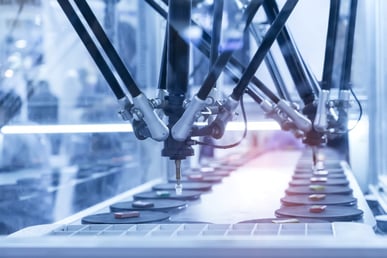Technology in Medical Manufacturing
Advances in medical device manufacturing have transformed not only what procedures we can perform safely, but also how we perform them. And while this is hardly a revelation, it’s never been at a more exciting place than it is today. The United States is currently responsible for 40% of the global medical device market and nearly 2 million jobs, with exports exceeding $41 billion in 2017 alone.
The booming U.S. tech industries like microelectronics and biotechnology have given us a leg up over the rest of the world, creating improved technologies and innovation across the board in medical devices. Companies like SCV's own Classic Wire Cut have made more modern implements accessible to the medical industry, providing solutions like automation and clean room assembly and packaging to expedite the process.
Let's take a look at some of the big changes that have hit the industry in the last year, and ahead to some we can expect in the near future:
Increased Use of Robotics and Automation
Strict regulations governing the medical device industry have prevented manufacturers from producing equipment as quickly as in other industries;  however, emerging technologies are making robotics and rapid manufacture more of a possibility. Automating assembly down to 10-20 micrometers opens doors for the use of robotics in the future, including during surgery, which will ultimately lead to more high-wage, skilled-labor jobs.
however, emerging technologies are making robotics and rapid manufacture more of a possibility. Automating assembly down to 10-20 micrometers opens doors for the use of robotics in the future, including during surgery, which will ultimately lead to more high-wage, skilled-labor jobs.
3D Printing and Biomaterials
It seems that these days, no conversation is complete without at least mentioning 3D printing, and medical device manufacturing is no exception. But the biggest 3D printing news to hit the industry in recent months is the utilization of biomaterials: engineered substances for use in medical treatment. While biomaterials themselves have been used over the last 50 years or so, there is a race to be the first to 3D print organs, and we're closer than ever.
 The University of Illinois has successfully created the framework to essentially print biomaterials into organs using a type of sugar called isomalt. Another group of scientists in San Francisco has recently released that it is close to being able to 3D print capillaries, critical tiny blood vessels that organs would require in order to be viable in the human body.
The University of Illinois has successfully created the framework to essentially print biomaterials into organs using a type of sugar called isomalt. Another group of scientists in San Francisco has recently released that it is close to being able to 3D print capillaries, critical tiny blood vessels that organs would require in order to be viable in the human body.
But beyond this breakthrough, the processes used in 3D printing themselves are allowing the production of machinery and parts used in medical device manufacturing. This leads to quicker production, reduced error, fewer design iterations, and, perhaps most importantly, personalized devices designed specifically for use in individual cases that wouldn't be created otherwise.
Bioelectronic Medicine
This relatively new concept is built on the premise that all of our organs and systems are connected by a set of nerves, and in measuring their electrical activity through special devices, we can determine diagnostics and treatment options. Through current research studies, it’s expected that over the next few years or so we will have co-therapies and even total pharmaceutical replacement for diseases and chronic illnesses like Rheumatoid Arthritis, Colitis, and even Parkinson’s and Alzheimer’s.
As processes and technologies become more defined, possibilities seem open-ended for manufacturing in the medical device industry.
To learn more about Medical Device companies in Santa Clarita visit our Medical Devices page.
If you’re ready to take your advanced manufacturing business to the next level, we’ve compiled the top resources for growing here in California. Learn more about:
- 5 Top Challenges in Manufacturing (and how they can become opportunities)
- California Resources and Incentives (to help manufacturing companies succeed)
- 6 Key Factors to Consider when Selecting the Right Location (that suits your short-term and long-term needs)
Download your FREE copy of Strategic Methods to Accelerate Your Manufacturing Business in California TODAY!
The Santa Clarita Valley Economic Development Corporation (SCVEDC) is a unique private / public partnership representing the united effort of regional industry and government leaders. The SCVEDC utilizes an integrated approach to attracting, retaining and expanding a diversity of businesses in the Santa Clarita Valley, especially those in key industry clusters, by offering competitive business services and other resources.
.png?width=1198&name=EDC_cmyk_orange-white%20horizontal.F%20(1).png)




